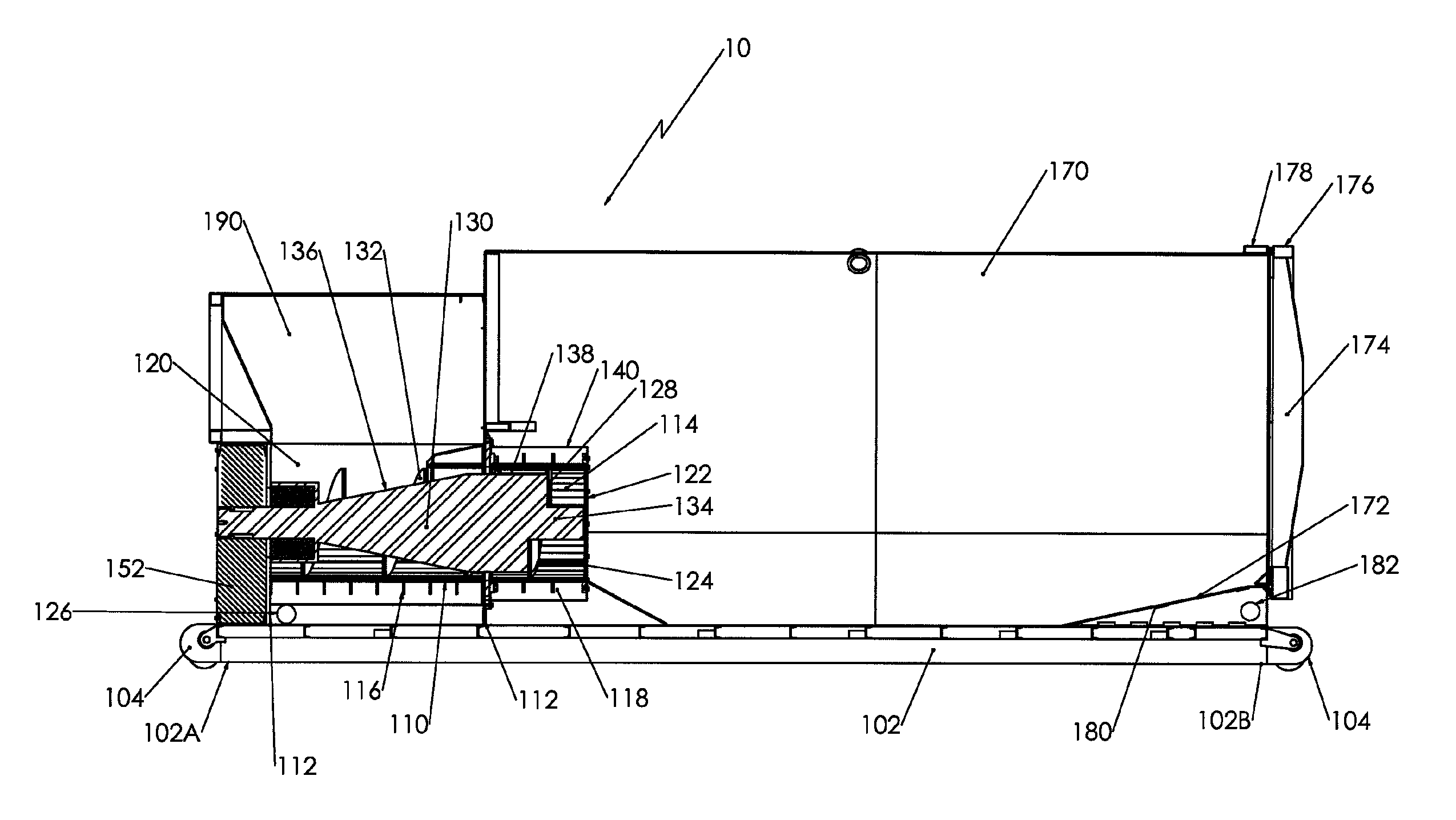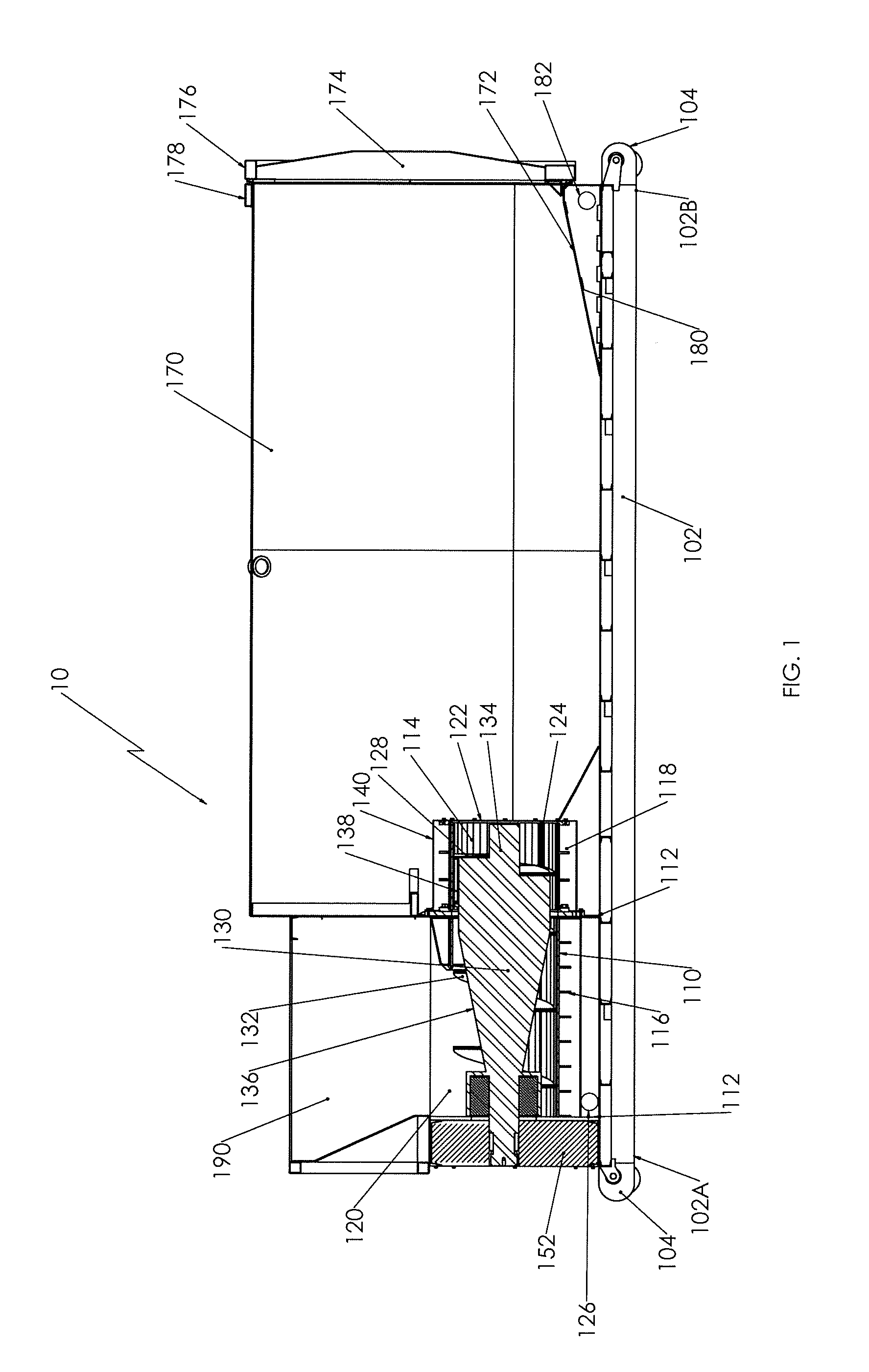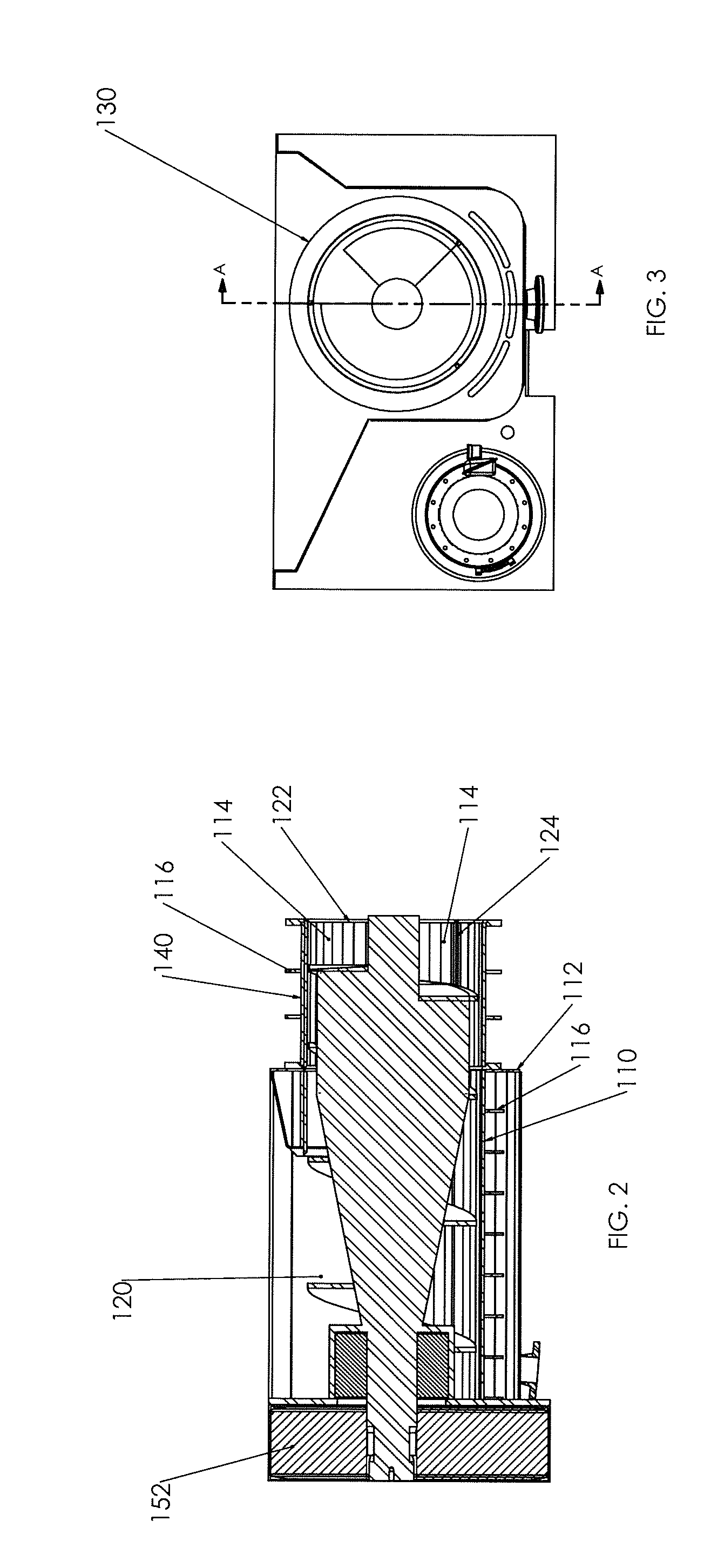System and method for crushing and compaction
a crushing and compaction technology, applied in the field of crushers, can solve the problems of increasing the amount of materials ending up in landfills, increasing the disposal cost, and increasing the liquid content of waste products, so as to reduce reliability, increase efficiencies and remedy problems, and constant back pressure
- Summary
- Abstract
- Description
- Claims
- Application Information
AI Technical Summary
Benefits of technology
Problems solved by technology
Method used
Image
Examples
Embodiment Construction
)
[0025]As seen in FIGS. 1-5, exemplary embodiments of a crusher 10 that may be adapted to compact plastics or other materials are illustrated. Exemplary embodiments may include a frame 102 with a proximal end 102A and a distal end 102B such that mounting bodies 104 are attached to the frame 102. In other exemplary embodiments, the frame 102 may be adapted to move on different surfaces with the inclusion of wheels, rollers, or other devices that are included with or exclusive of the mounting bodies 104 that would facilitate movement thereof.
[0026]Exemplary embodiments of the crusher 10 may include a compaction chamber 110 that may be mounted to the frame 102. The compaction chamber 110 may include one or more mounting bodies 112 that extend from the periphery thereof that facilitate mounting of the compaction chamber 110 with the frame 102. The compaction chamber 110 may be associated with the frame 102 by any number of means. However, in one example, threaded fasteners may facilitat...
PUM
 Login to View More
Login to View More Abstract
Description
Claims
Application Information
 Login to View More
Login to View More - R&D
- Intellectual Property
- Life Sciences
- Materials
- Tech Scout
- Unparalleled Data Quality
- Higher Quality Content
- 60% Fewer Hallucinations
Browse by: Latest US Patents, China's latest patents, Technical Efficacy Thesaurus, Application Domain, Technology Topic, Popular Technical Reports.
© 2025 PatSnap. All rights reserved.Legal|Privacy policy|Modern Slavery Act Transparency Statement|Sitemap|About US| Contact US: help@patsnap.com



